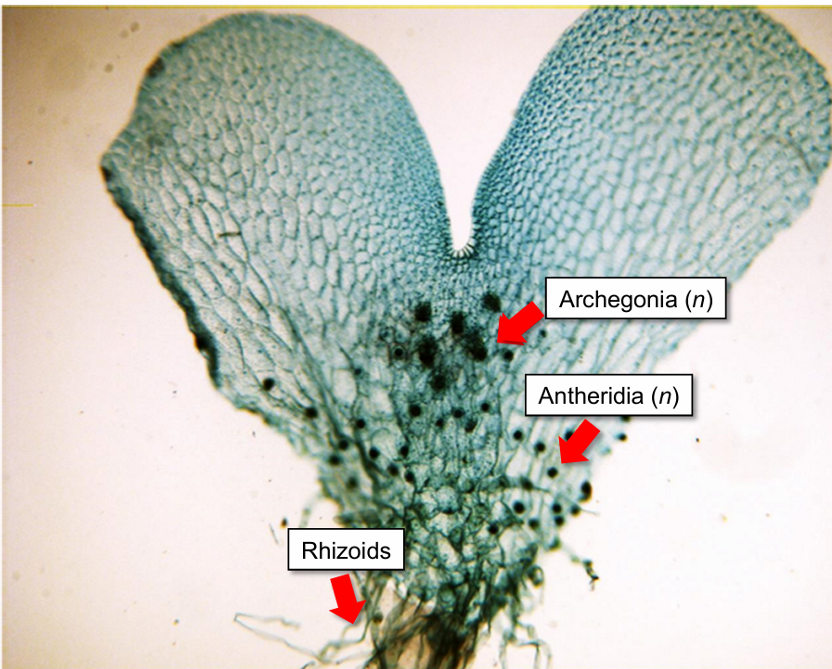Green Algae and Seedless Plant Diversity
1/39
There's no tags or description
Looks like no tags are added yet.
Name | Mastery | Learn | Test | Matching | Spaced |
|---|
No study sessions yet.
40 Terms
Green Algae
group of photosynthetic organisms that are not land plants
Features of green algae
Eukaryotic
most are protists
contain chlorophyll for photosynthesis
can be unicellular or multicellular
primarily aquatic
Green algae fall into two major groups:
chlorophytes and Charophytes
plant
(kingdom: Plantae) are photosynthetic organisms that have complex tissue structures that evolved for living on land
features of plants
eukaryotic
photosynthetic (contain chlorophyll and chloroplasts)
multicellular
primarily terrestrial (live on land)
plant groups
non-vascular plants
seedless vascular plants
seed plants
plants and green algae are primary producers.
sun is the primary source of energy; autotrophs convert solar energy to be stored in organic matter; primary producers are responsible for generating organic matter; heterotrophs use the organic matter for fuel for their own cells.
challenge: preventing desiccation
adaptation for land: protective cuticle (waxy covering)
challenge: support for the body
adaptation for land: fibrous stems provide stability
challenge: obtaining resources for growth
adaptation for land: vascular tissues (roots absorb H2O and minerals, while green shoots conduct photosynthesis)
challenge: gas exchange
adaptation for land: stomata (pores in the cuticle)
challenge: fertilization of gametes with limited water
adaptation for land: protective housing for gametes called gametangia (antheridia for sperm and archegonia for eggs)
plant life cycle
alternation of generations: sporophyte (diploid (2n)) →← gametophyte (haploid (n))
sporophyte (2n)
multicellular diploid stage
sporangium (2n)
location of spore production by meiosis
spore (n)
a haploid cell for asexual reproduction
gametophyte (n)
multicellular haploid stage
gametangia (n)
location for gamete production and mitosis
Antheridium (n)
location of sperm production
archegonium (n)
location of egg production
Alternation of Generation
Plants have two multicellular phases;
sporophyte (diploid, 2n)
gametophyte (haploid, n)
sporophyte (2n) produces sporangium (2n)
sporangium (2n) produces spores (n) by meiosis
Spores (n) develop into a new gametophyte (n) by mitosis
Gametophyte (n) produces gametangia (n)
Antheridium - produces sperms (n) by mitosis
Archegonium - produces eggs (n) by mitosis
Egg + sperm fuse (fertilization) into zygote (2n) which develops into a new sporophyte (2n) by mitosis
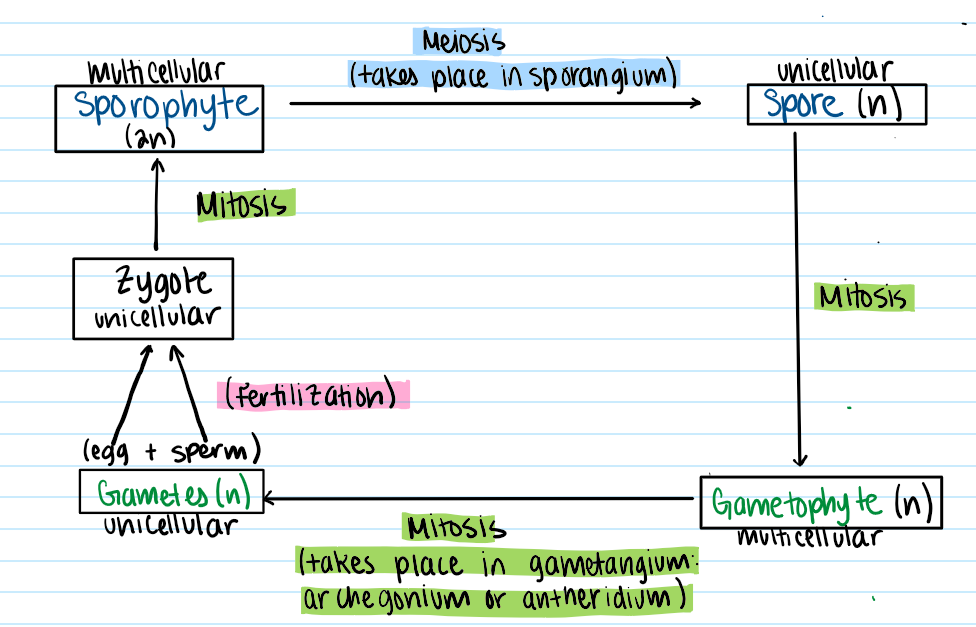
Charophytes (green algae)
Evidence indicates that charophytes are the closest relatives of terrestrial plants. similar mechanism for forming a cell plate in cell division; similar nuclear and chloroplast genes; cell walls with a high concentration of cellulose; flagellated sperm similar to some land plants’ sperm; genus Chara produces gametes within gametangia - a key feature that allowed plants to colonize dry land.
Genus spirogyra
genus of filamentous charophyte named for the spiral arrangement of its chloroplast
asexual reproduction: spirogyra
haploid under normal conditions and usually reproduce asexually by mitosis
sexual reproduction: spirogyra
when conditions deteriorate, spirogyra undergoes sexual reproduction (conjugation). resulting in diploid zygospore (2n) with a thick coat that can withstand harsh conditions. the zygospore remains dormant until conditions improve.
Spirogyra conjugation
A: vegetative filament
B: formation fo conjugation tubes between two filaments
C: gamete (n) from one filament migrates to another filament
D: fusion of two gametes (n) forms a zygospore (2n)
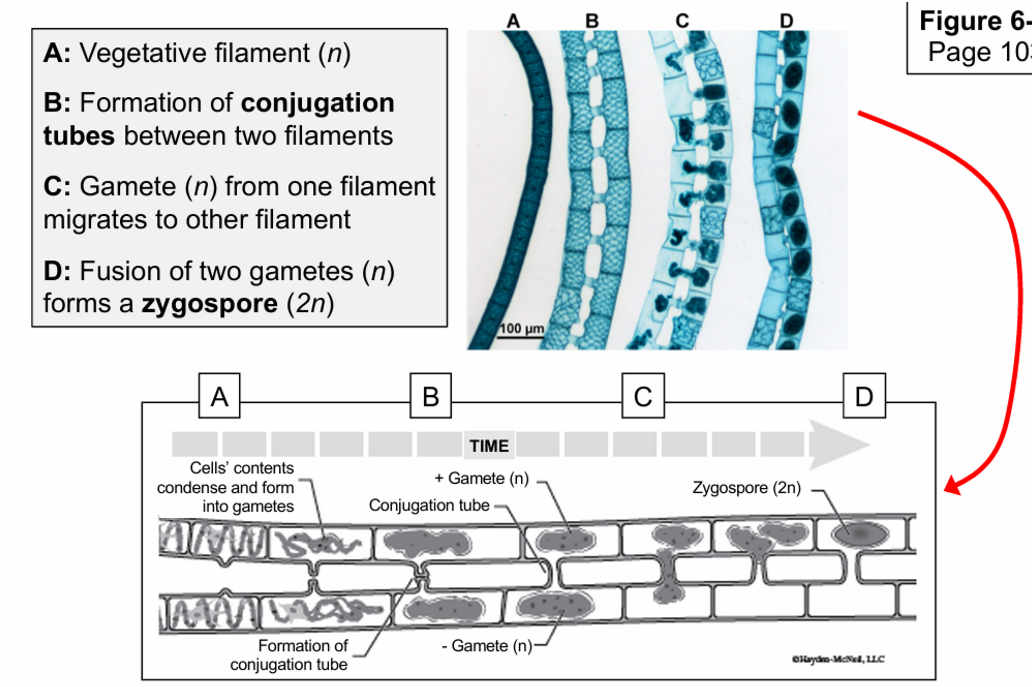
Genus chara
genus of branching charophyte that shares many features with land plants (gametangia)
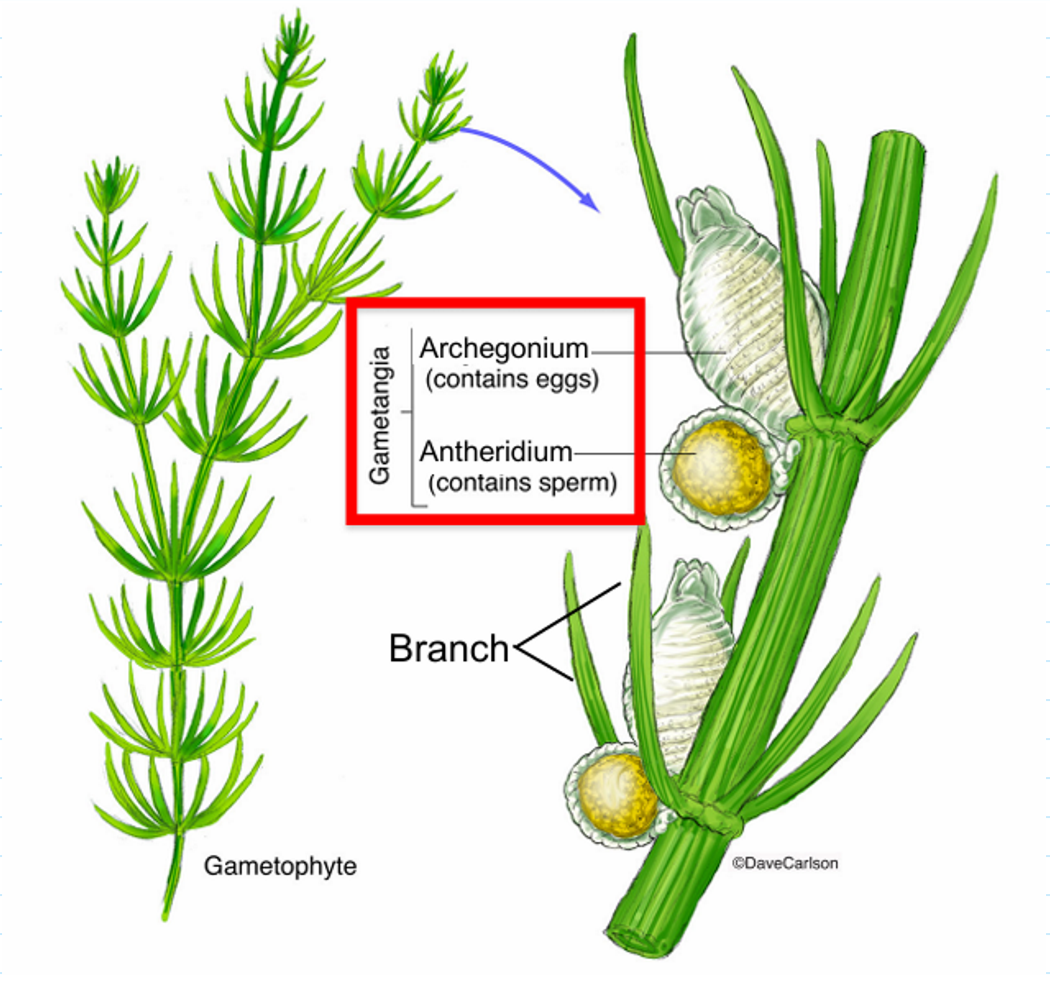
Seedless plants reproduce with spores
seedless plants (mosses and ferns) were the earliest land plants
most abundant plants on earth until - 285 MYA
reproduce using spores, not seeds
many species are adapted to grow directly on rocks
bryophytes: non-vascular land plants
Don’t have vascular tissue to transport water
Relies on diffusion and osmosis for the transport of water and minerals
anchored to rocks/soil by rhizoids - different from roots
The gametophyte(n) is the dominant generation
The sporophyte is dependent on the gametophyte for energy and nutrition
moss gametophytes are either male or female
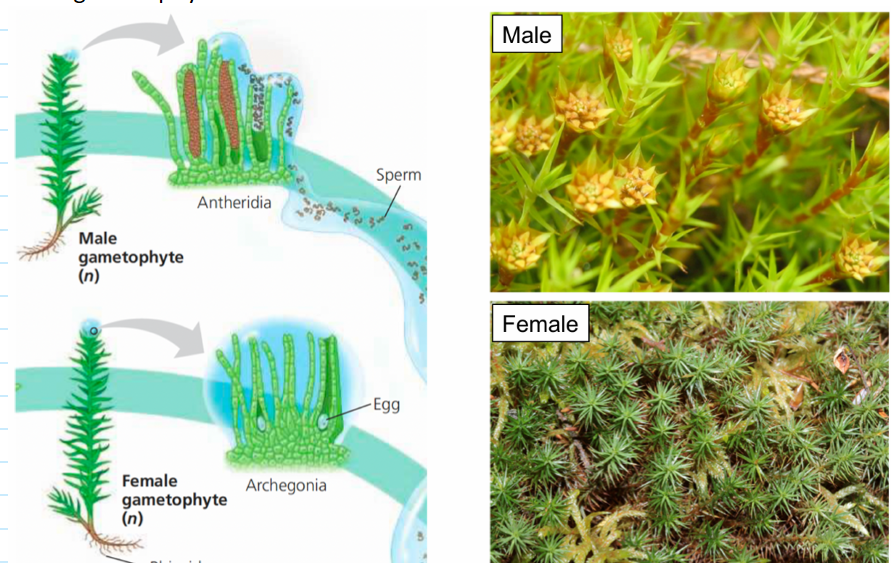
Moss life cycle
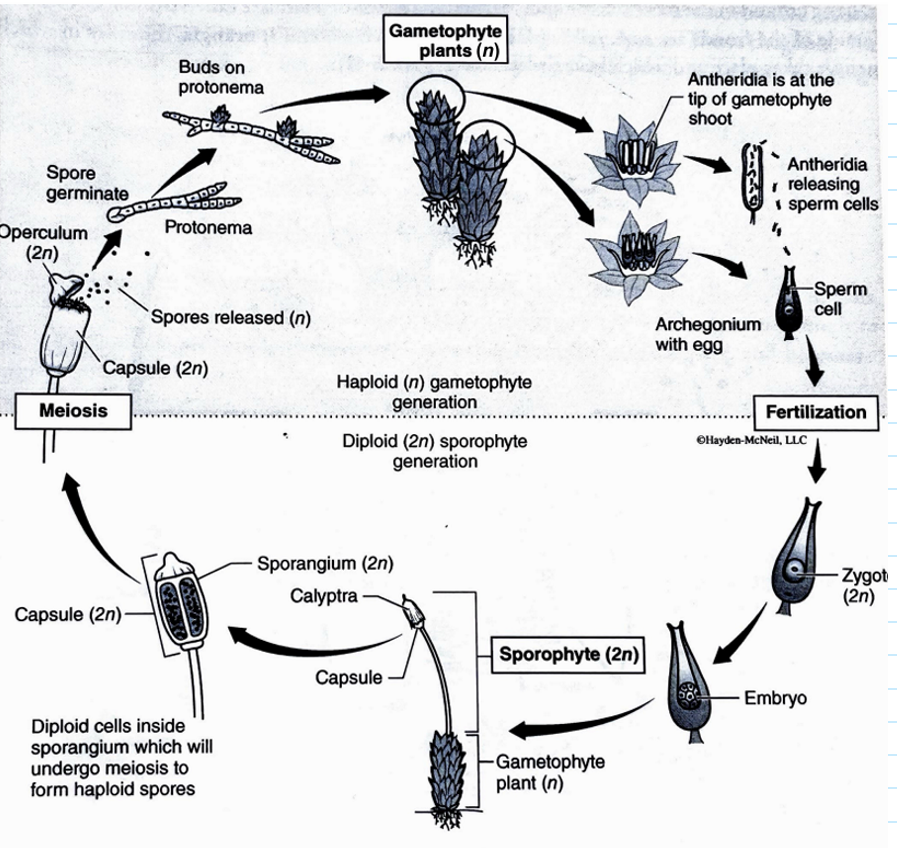
moss antheridium
located at the top of the male gametophyte (n) and contain sperm inside
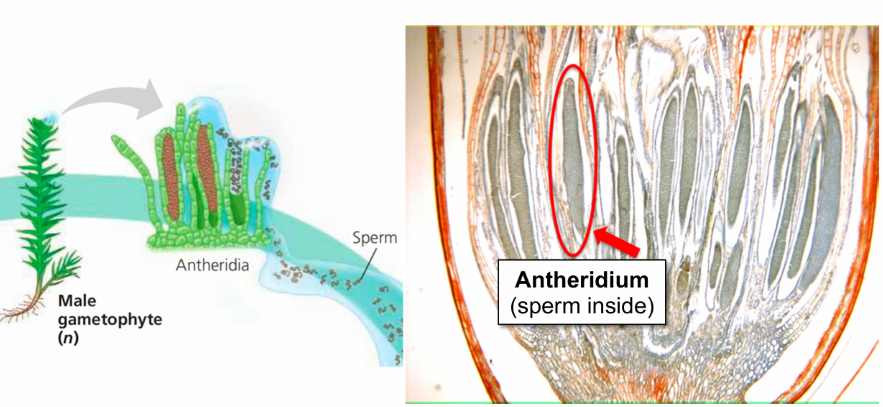
moss archegonium
located at the top of the female gametophyte and contains eggs inside
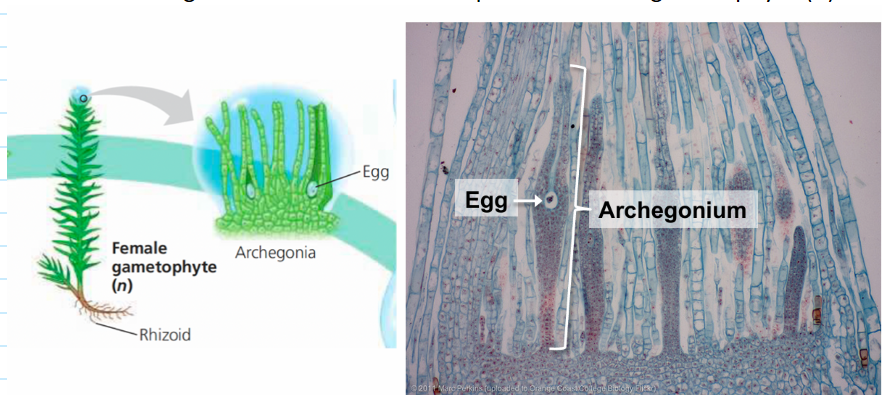
Moss capsule
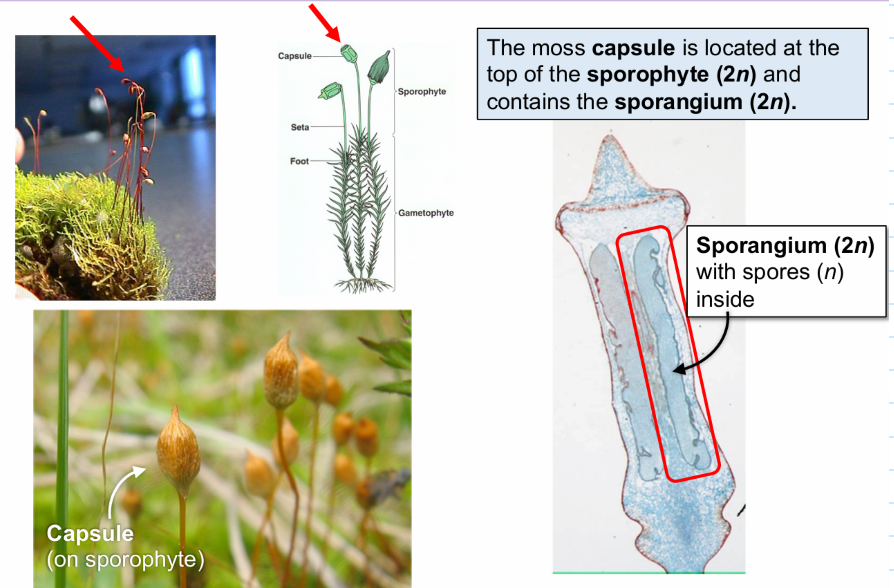
Alternation of generations (moss)
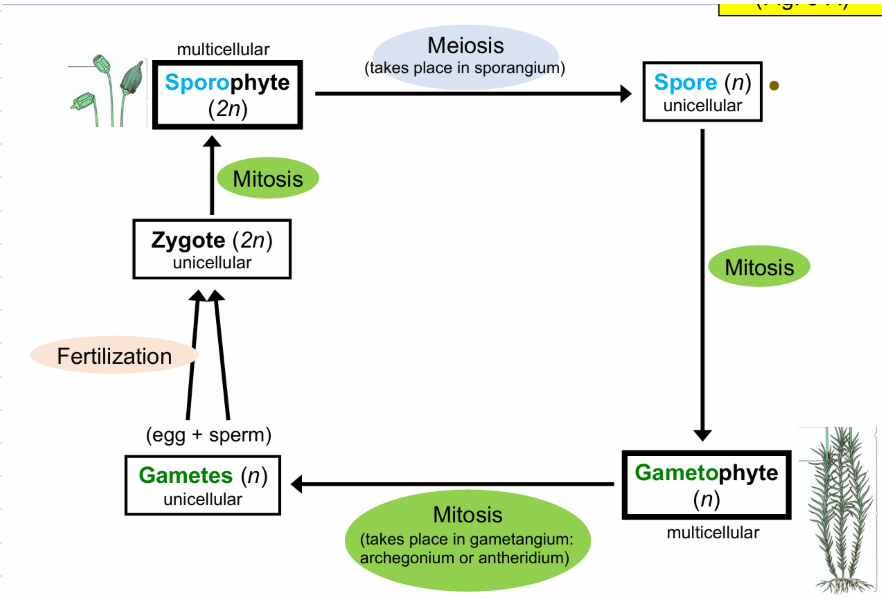
Ferns
have vascular tissue including roots, leaves, and stems
dominant generation is the sporophyte (2n)
both generations are free living (neither depends on the other for nutrition) - different from bryophytes
Dominant generation
ferns and seed plants evolved with the sporophyte (2n) as the dominant generation.
fern sporophyte (2n)
contains structures called sori under the fronds
sori
contain the sporangia, where meiosis takes place to produce spores
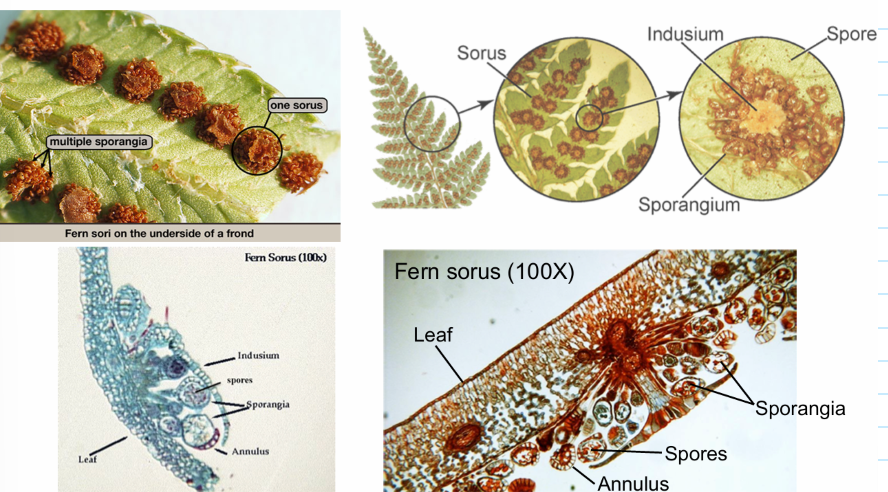
fern gametophyte
contains both male and female gametangia
